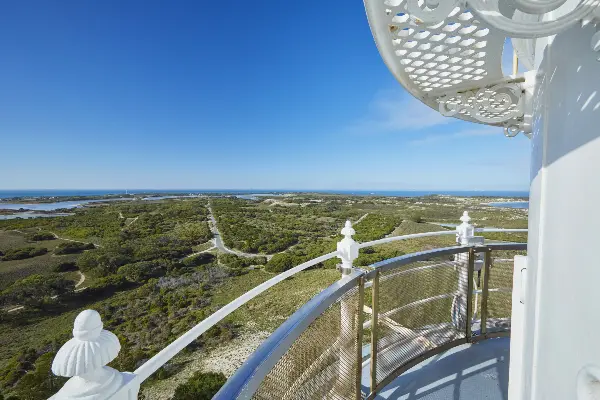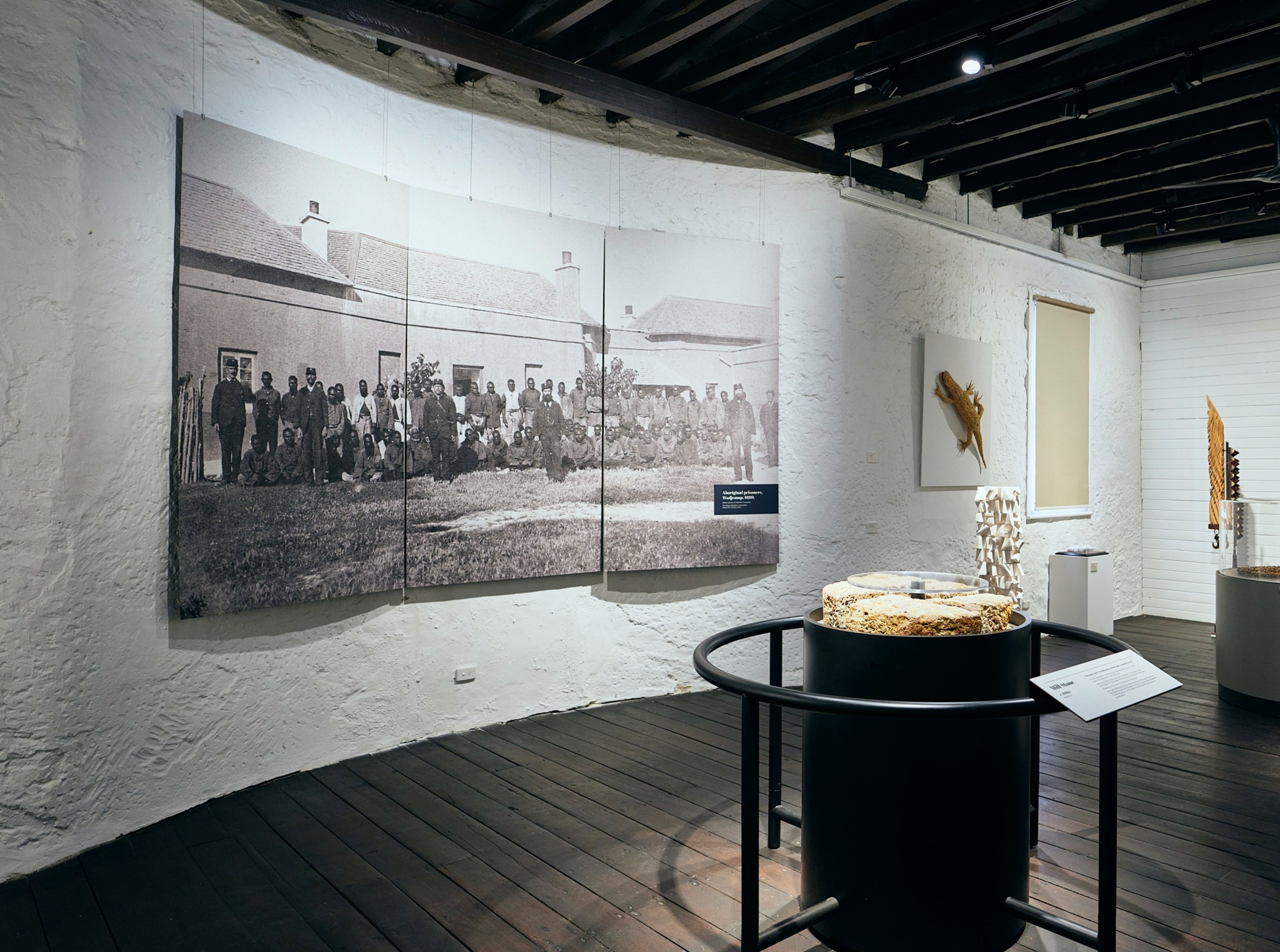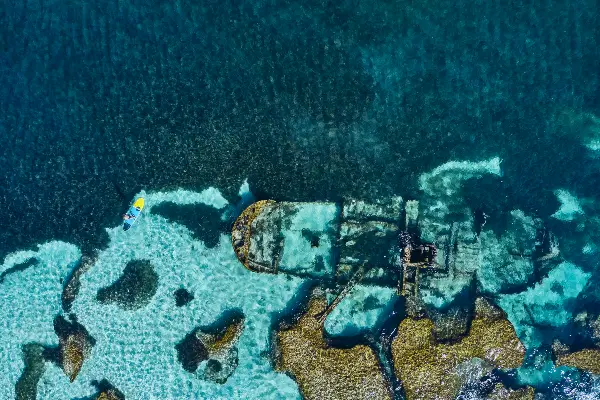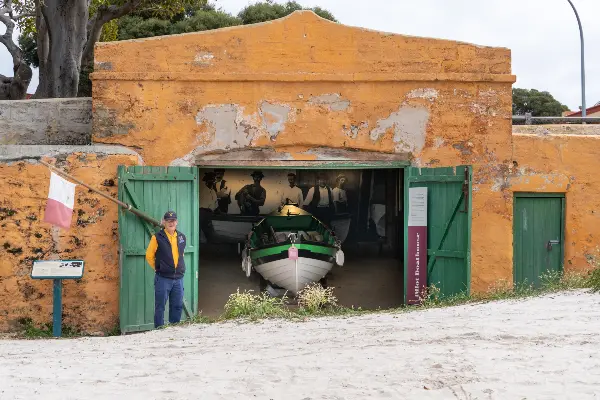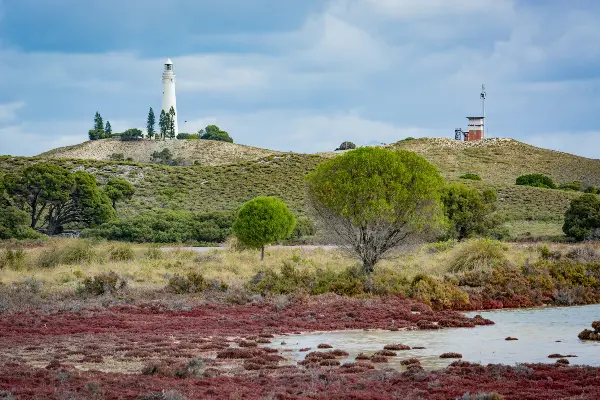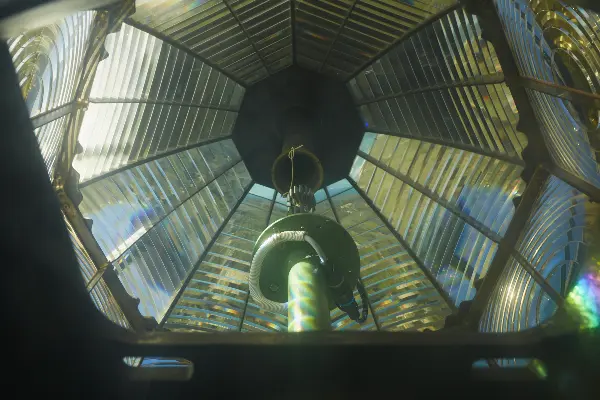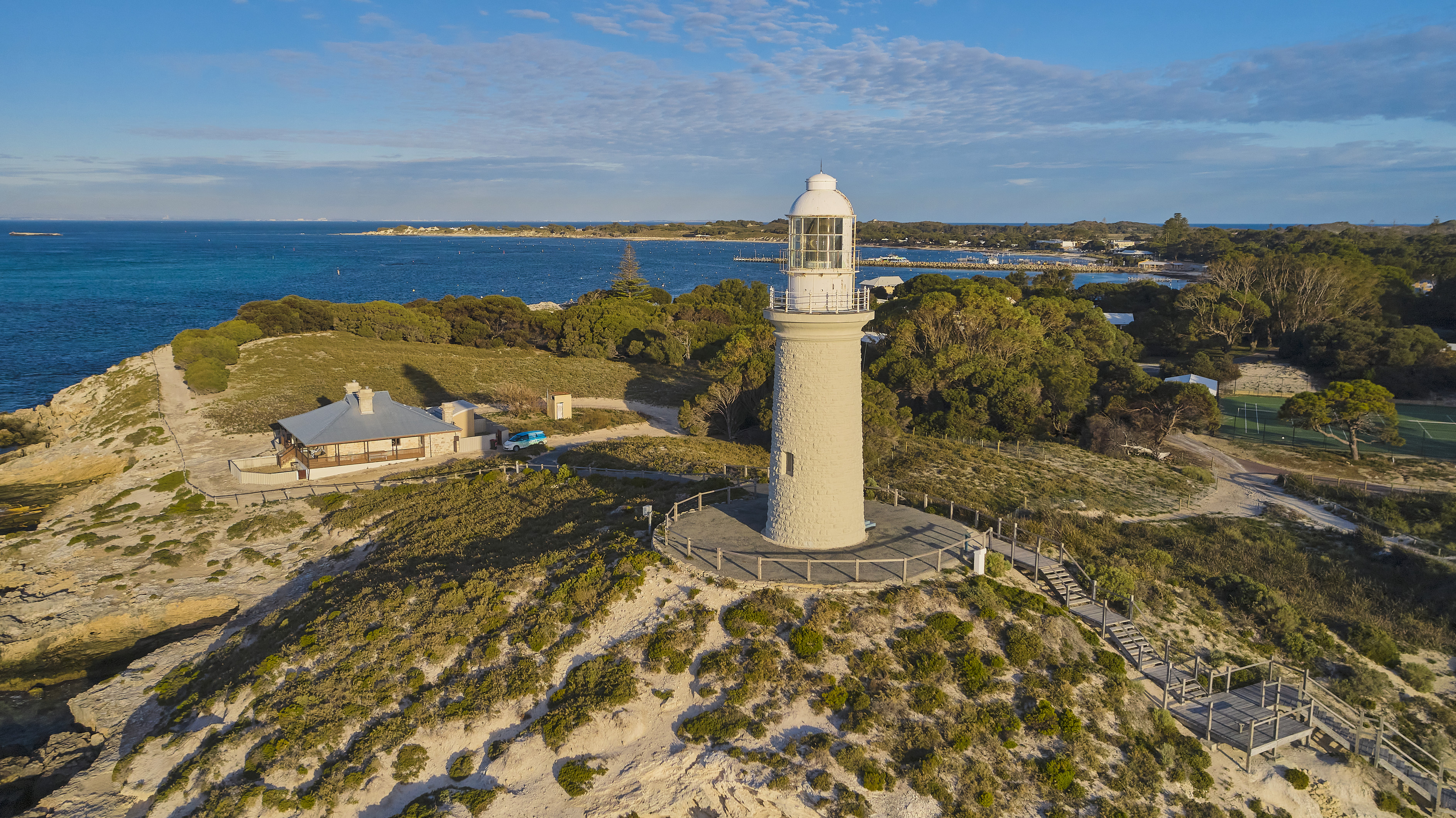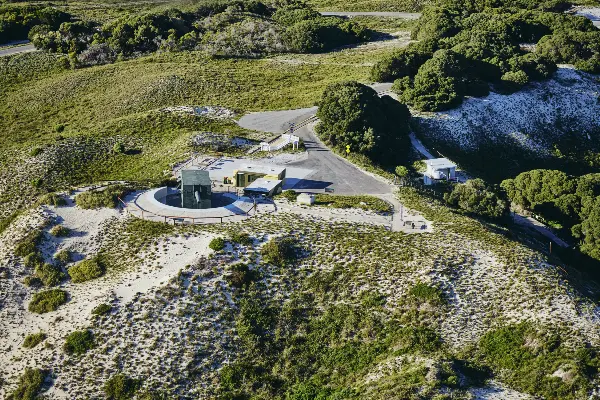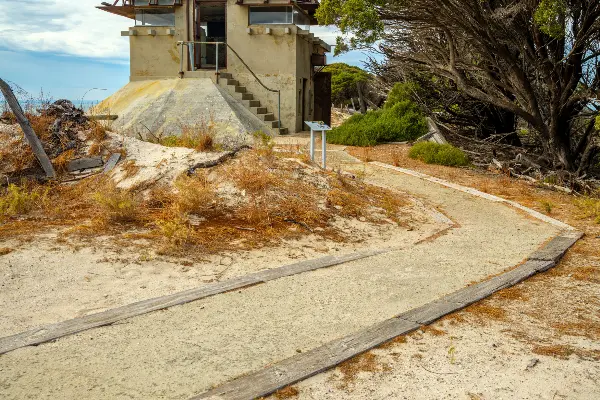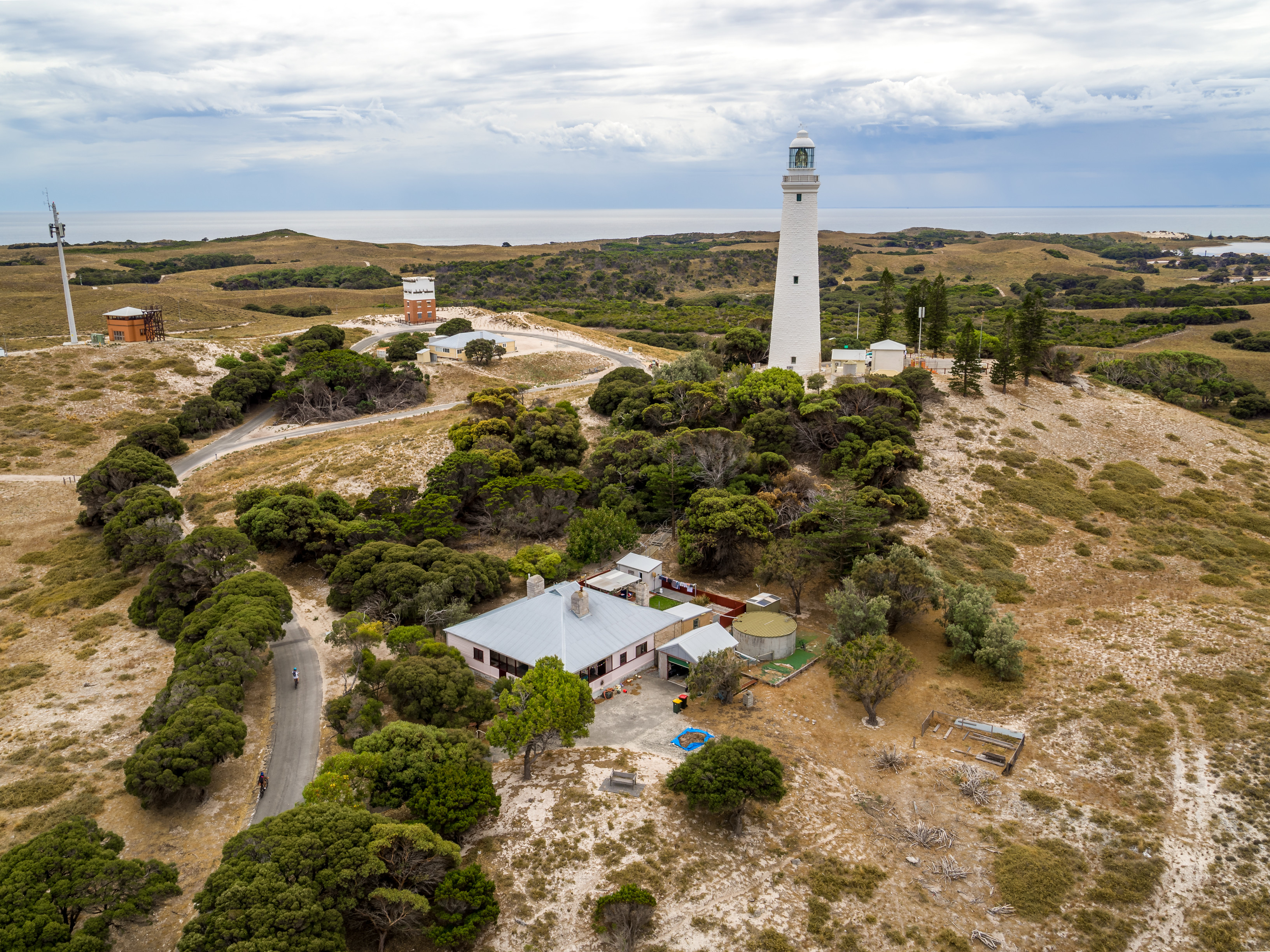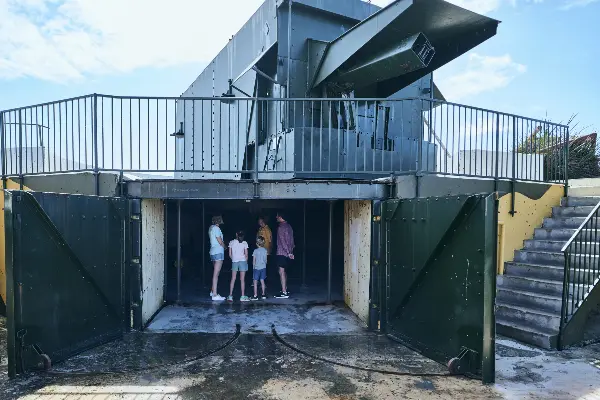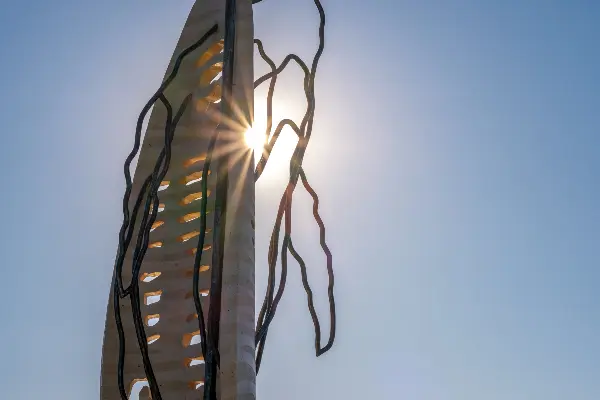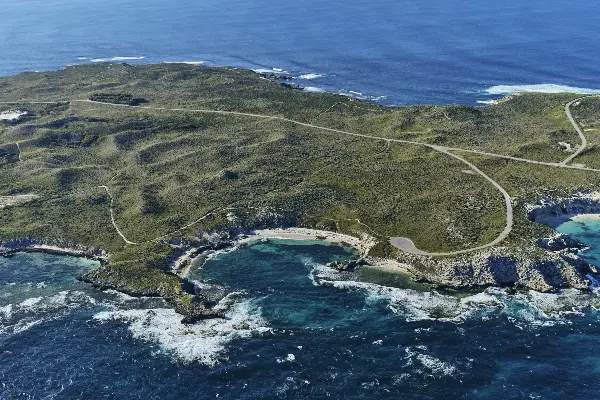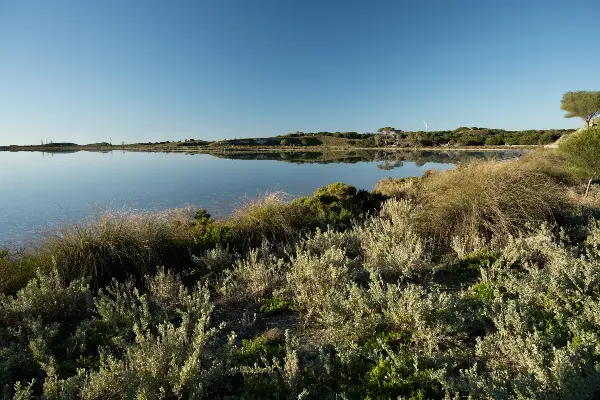Between the wars
As Wadjemup returned to its peacetime trappings, the world moved on, and the technology on the island progressed. Buildings were improved, Bathurst Lighthouse was upgraded to an automatic flashing light in 1920, visible up to 14 nautical miles across the waves. This helped further improve the safe passage for ships over the ocean.
During this time, however, political upheaval was rearing itself again in Europe.
In 1933, with rumblings of international conflict on the horizon, Rottnest Island was identified as a critical point in Western Australia’s coastal defence. It was agreed that the installation of a system of guns on the island could provide vital defence of Fremantle Port against any hostile ships.
In 1936, Wadjemup Lighthouse was connected to electrical power. At the same time, preparations began at Bickley Point to make way for the island’s naval defences.
Two gun batteries were constructed on the island: Bickley Battery, featuring one set of two 6-inch guns, and Oliver Hill Battery, with two 9.2-inch guns. The military also constructed six searchlight emplacements, magazine shell stores, a powerhouse, a directing station, and a railway from the jetty to the 9.2-inch guns.
This became known as the Rottnest Island Fortress.





